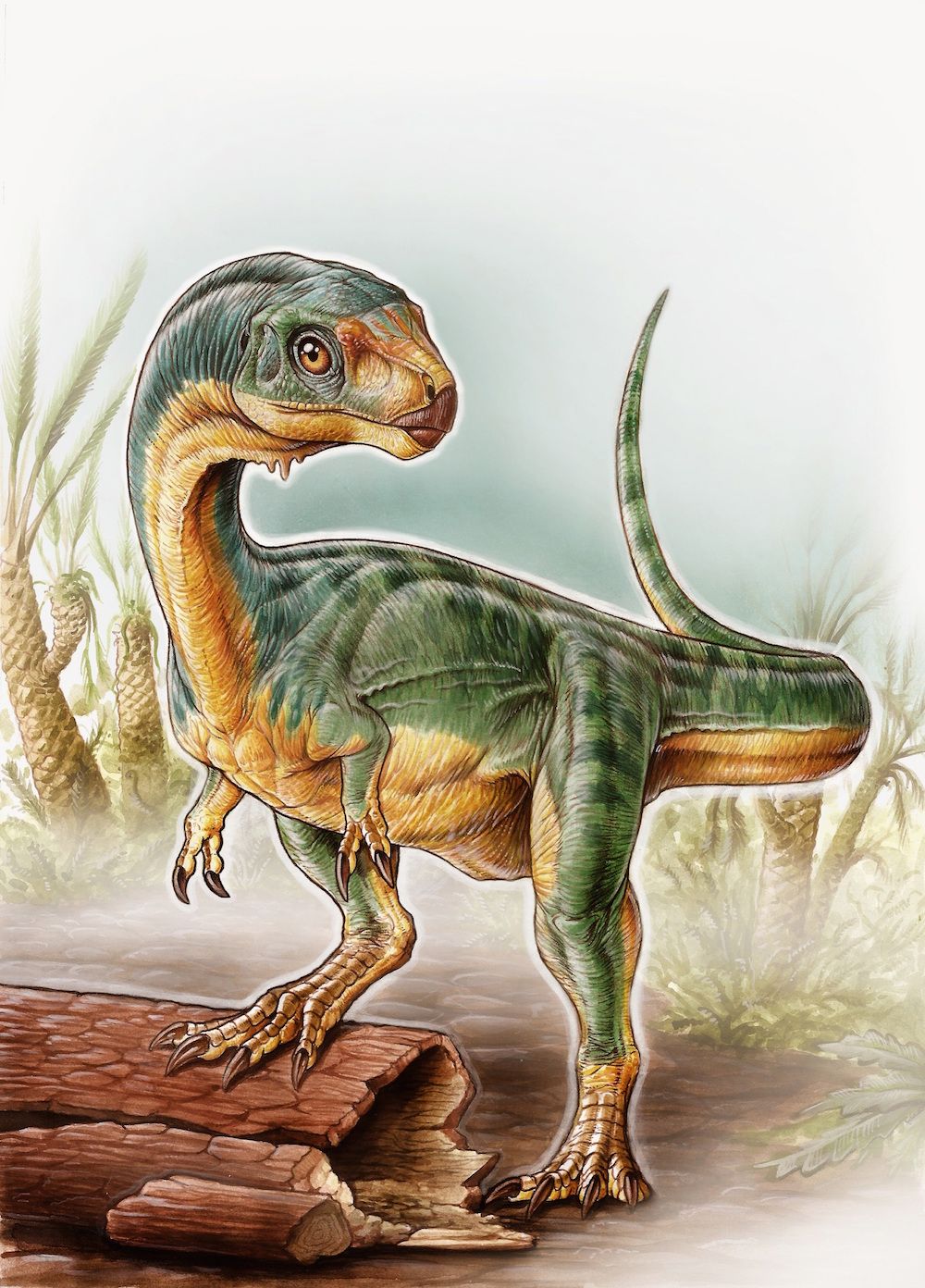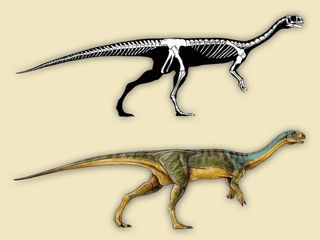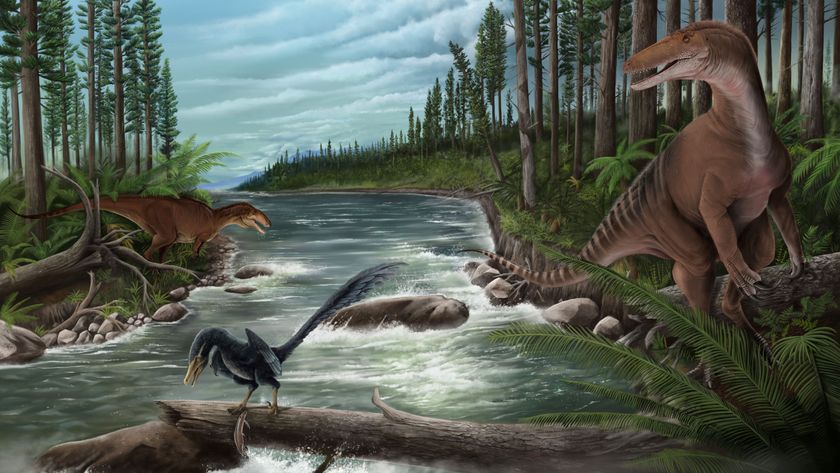Bizarre Cousin of T. Rex Was a Vegetarian

A relative of Tyrannosaurus rex didn't share the infamous carnivore's appetite for meat, a new study finds. Instead, the newly discovered 9.8-foot-long (3 meters) dinosaur munched on plants about 145 million years ago during the Late Jurassic period.
The new species is a member of the theropod group, which consists of mostly carnivorous dinosaurs and includes not only T. rex but also the fearsome Velociraptor. The newfound "bizarre herbivorous" creature looked like a mixture of a plant-grazing, long-necked sauropodomorph; an herbivorous beaked ornithischian; and a meat-eating theropod, the study researchers said.
"When I saw all the fragmented bones laying on the table, I thought all of them belonged to different dinosaur lineages," said the study's lead researcher, Fernando Novas, a researcher at the Bernardino Rivadavia Natural Sciences Museum in Buenos Aires, Argentina. "That dinosaur is spectacular and bizarre because it combines different features belonging to these three main groups of dinosaurs." [See Images of the Bizarre Plant-Eating Dinosaur]
Researchers uncovered the curious fossils in 2010. The observant 7-year-old son of two geologists spotted a few dinosaur vertebrae during an expedition with his family in Aysén, a region in southern Chile. The researchers named the new dinosaur Chilesaurus diegosuarezi, in honor of Chile and the boy, Diego Suárez.
Since Diego's discovery, collaborating Chilean and Argentinian scientists have uncovered more than a dozen Chilesaurus specimens, including four complete skeletons ranging from the size of a turkey to almost 10 feet (3 m) long.

If they had not discovered the complete specimens, researchers may have identified different parts of Chilesaurus as belonging to different species, the scientists said. For instance, the dinosaur's ilium, the upper, large part of the pelvic bone, looks like that of a theropod. It also had robust forelimbs and likely walked on its hind legs, like other theropods, Novas said. However, Chilesaurus did not have sharp claws like Velociraptor, but instead sported two blunt fingers for hands.
Chilesaurus also had a small skull, long neck and large, clunky feet reminiscent of a sauropodomorph, Novas said. "In the case of Chilesaurus, its legs were more adapted to walk, not to run," he said. "The hind foot is composed of four well-developed toes, different from the three-toed feet of a theropod."
Sign up for the Live Science daily newsletter now
Get the world’s most fascinating discoveries delivered straight to your inbox.
Moreover, Chilesaurus had a pubic bone that looks like that of an ornithischian, Novas said. It's possible that the pubic bone rotated backward over evolutionary time to allow Chilesaurus more room in its gut to digest plant material, the researchers said.
The new species is a "wonderful weirdo," said Thomas Carr, an associate professor of biology at Carthage College in Wisconsin and a vertebrate paleontologist, who was not involved in the study.
"We're learning about the rules of dinosaur evolution," Carr told Live Science. "It shows that the dinosaurs across theropods and sauropodomorphs and even ornithischians tend to follow the same rules in changing their bodies," when they evolved into herbivores.
Chilesaurus isn't the only herbivorous theropod. The therizinosauroidae, which lived in present-day Asia and North America, also ate plants.
Therizinosauroidae "also have relatively small heads and long necks and stumpy feet," Carr said. "And their hip bones and pubis point backward. And these [features] are broadly similar to Chilesaurus."
The remarkable fossils "say something about the limits upon dinosaur evolution," Carr said. "It just shows that we really don't know much about dinosaurs at all."
The study was published online today (April 27) in the journal Nature.
Follow Laura Geggel on Twitter @LauraGeggel. Follow Live Science @livescience, Facebook & Google+. Original article on Live Science.

Laura is the archaeology and Life's Little Mysteries editor at Live Science. She also reports on general science, including paleontology. Her work has appeared in The New York Times, Scholastic, Popular Science and Spectrum, a site on autism research. She has won multiple awards from the Society of Professional Journalists and the Washington Newspaper Publishers Association for her reporting at a weekly newspaper near Seattle. Laura holds a bachelor's degree in English literature and psychology from Washington University in St. Louis and a master's degree in science writing from NYU.











